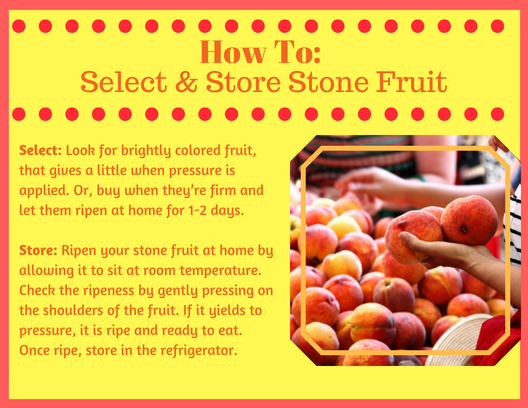[metaslider id=4216]
This past spring, we welcomed a new growing and packing facility to the Sage Fruit family. With this new warehouse (Vanguard Pride Packing), we have added more apples And cherries to our inventory…but we’ve also added LOTS of Northwest grown produce stone fruit. So while we enjoyed the previous summer, we now have three more reasons to love it: apricots, peaches & nectarines! While our apricot the season is already over, we’re just getting started peaches And nectarines.
What is a stone fruit?
Let’s first define what a stone fruit East. Very simply, it is a fruit that contains a large “stone” (or pit) inside. Many people think that the stone itself is the seed, but the stone actually protects the seed inside. (Cherries are also considered stone fruits.)
Our stone fruits
Starting this summer, we offer both conventional and organic. peaches And nectarines available. All our peaches And nectarines are tree-ripened for the sweetest flavor! You may be wondering, “What does it mean to ripen on a tree?” » Well, we let the fruit stay on the tree as long as possible so that it has the opportunity to reach its highest sugar content. We pride ourselves on providing an exceptional dining experience and know that the tree ripening process is the most important aspect of our stone fruit growth. While we pick the still firm fruits, we do it not Pick it when it is green. So you can eat it as soon as you get home, or let it sit on the counter to soften a little.
Types of peaches
Peaches have a delicate aroma and velvety skin. According to the pit, peaches are classified into ashlar or semi-adherent varieties. A size stone fishing can have its central stone easily removed from the flesh as it is not attached. On the other hand, the central stone of a semi-adherent fishing is attached to the flesh. cut stone peaches are much more suitable for canning than semi-sticks peacheshowever there is no noticeable difference in flavor, and both are excellent to eat fresh!
Furthermore, the flesh of peaches may be different – we grow white-fleshed and yellow-fleshed varieties.
- White Flesh: Extremely sweet!
- Yellow Flesh: Mild and balanced flavor.
Types of nectarines
Nectarines And peaches are closely related. However, they have one visible difference: their skin. Peaches are velvety, while nectarines are smooth. Their skin is a bright golden color with undertones of ruby and pink throughout. All nectarine varieties are semi-adherent.
As peaches, nectarines can be either yellow-fleshed or white-fleshed. The flavor profile of each also follows the same as peaches.
- White Flesh: Extremely sweet!
- Yellow Flesh: Mild and balanced flavor.
Availability
- Peaches grown in the northwest: mid-July to September
- Nectarines grown in the northwest: from mid-July to September
Need help choosing the perfect fruit? Use the guide below!

